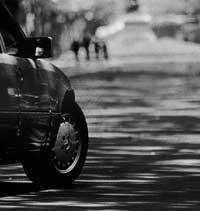The curiosity of light rays
What warmer, white or black?
A curious and simple essay is:
On one of those sunny days when snow covers our homes, streets and mountains in winter, two cloth scarves of the same size, one white and one black, are caught and placed on the snow. After a couple of hours, we will see that the black scarf has entered the interior of the snow and that the txuri follows exactly as before. It is not easy to find the cause of this type of behavior: the black scarf, which sucks much of the rays of light that touch it, melts the snow below. Instead, white reflects most of the rays and heats much less than black.
The first to make this essay is Benjamin Franklin, who invented the lightning rod.
He said:

“A couturier I removed some pieces of square cloth. Some were black, others dark blue, light blue, green, purple, red, white and other colors and ships. One bright morning I placed all these pieces of cloth on the snow. After several hours, after the black part warmed more than others, it was so sunken that the rays of light did not reach it; the dark blue was almost as sunken as the black; the light blue was much less and the rest of colors becoming lighter. Txuria stayed on the surface, that is, nothing sank.
What is the use of theory if it did not draw practical conclusions? —he argued and followed—: From this essay is it not deduced that black garments are more inappropriate than txuris in warm and sunny environments? Yes, of course. With blacks our body heats up more to the sun and, in addition, if we make some movements that heat us for themselves, the heat will be too large. Should summer hats not be white to avoid the heat it produces in some people? Moreover, if the walls were painted black, will it not happen that the heat tanned during the day has been stored overnight, at least at one level, and that the fruits are not frozen? Will a prudent observer not draw other important or less important conclusions?”
The degree of importance of these conclusions and the practicality of their uses is reflected in the German expedition that in 1903 travelled to the South Pole on the Grauss boat. The ship was trapped in the ice and the roads used to release were useless. Both the explosives and the saws were able to move up to a hundred or another cubic meter of ice, but in no case released the boat. Then the expedition went to the sunbeams: from the boat to the first tear on the ice, 2 km long and 10 m wide, they threw coal and ash on the ice forming a huge black strip. It was summer and the day was of those lights and long. The rays of light obtained what the dynamite and the saws did not, and the ice melted in the aforementioned strip, leaving the road free to the boat.
Imagery

Who hasn't heard of this phenomenon? Who hasn't read a joke or other phenomenon? The remains of the desert, warmed by the rays of the sun, behave like a mirror. For this to happen, the density of the layer in the air in contact must be lower than that of those on it. Then, any oblique beam of light that protrudes from any distant object, deviates when it meets that layer and, as it progresses, moves away from the ground again. Therefore, the answer is simple.
During the phenomenon, the air layers are not stopped. Without interruption the hottest layer goes up and is replaced by a colder one touching the hot soil, but it heats up quickly and rises again. However, at any time the layer that is in contact with the pavement, even if it is not the same, is warmer than the top layer.
This type of representation has been known since time immemorial. Today meteorology is called “lower imagery” to refer to the “higher imagery”, which appears due to the low presence of air in the higher layers of the atmosphere.
Many think that imagery only appears in the southern desert and in places further north is impossible. That is not true. Many times when we go on the road of tar or asphalt and the day is very sunny, since the black pavement is very hot and what we have said before can happen, that is, at a distance the road is wet and reflects their belongings. So if you look, anyone can see the mirage.





